

In a new analysis of traffic data by the Portland Bureau of Transportation, they say recent changes to Southeast Hawthorne Blvd that included a bus priority lane, protected bike lanes, enhanced crossings, and other lane striping changes — have met the city’s goals for biking, walking, and transit users. And the benefits have come with very minor impacts on driving times through the corridor.
PBOT’s SE Hawthorne Boulevard Evaluation Report took a closer look at two projects that were completed in 2021. The first one added a bus lane and protected bike lanes to Hawthorne from the Hawthorne Bridge viaduct to SE 13th. The second was the infamous “Pave and Paint” project that reconfigured the lanes, added median-protected crossings, and improved ADA ramps from SE 24th to 50th (this is the project where many people pushed for bike lanes, but PBOT chose to not install them).
So, how are things working now that the dust has settled? I’ll cut right to the conclusion of PBOT’s 17-page evaluation report:
“The findings in this report point to a safer and more accessible SE Hawthorne Boulevard. Vehicle speeds, especially top-end speeding, have significantly decreased. Accessibility, comfort, and safety has improved for everyone, especially pedestrians, people biking, and people taking transit. Meanwhile transit travel time improved, and travel time increases for people driving were relatively small and in-line with expected travel time increases when driving speed is reduced.”
PBOT backs up these claims with data on driver speeds, crossing availability, bus trip times and reliability, and more.
Speeds
The reduction in speeding (which has a direct impact on bikers, walkers, and transit users) is perhaps the biggest success PBOT can claim as a result of these projects. They measured speeds at three locations — SE 6th, 31st and 37th — before and after the changes. Speeds are down across the board; but top-end speeders saw the greatest reduction. See chart below:
On the inner portion of Hawthorne, lower speeds are no surprise since the bureau effectively narrowed the driving space. On the outer portion however, PBOT actually increased lane widths, which led to concern from some safe streets activists.
Transit
Bus speeds stayed mostly the same throughout the day, PBOT said. But during peak periods, buses were quicker by about 45-60 seconds through the corridor. Keep in mind that with the Pave and Paint (on the more densely commercial section of Hawthorne east of 24th), PBOT said the main reason they opted against bike lanes was because of delays it would cause for bus users.
In their evaluation, PBOT says the project has led to a 10% reduction in bus delays in the Pave and Paint section and was shortened by almost a full minute in the inner section of Hawthorne (west of 12th).
Driving times
PBOT also measured the time it took to drive through the corridor before and after the changes. Despite all the changes to the road design, PBOT’s analysis found that median travel time for car and truck drivers did not change significantly between SE Grand and 20th avenues. And between SE 20th and César E Chávez Boulevard, median travel times increased 20-30 seconds, and 40-60 seconds in the directional peaks.
“This is less than half of the travel time increases PBOT expected based on pre-project modeling,” the bureau said in their report.
The city’s critique of their own work is one thing, but what do Portlanders think? We asked that question of Hawthorne users one year ago and wrote, “Though opinions differed, the general consensus was that the new Hawthorne is better than the old one – but it could be a lot better.”
And it’s important to note that this evaluation included to very different projects when it comes to bicycling infrastructure. One of them (from the bridge to 12th) led to a significant improvement in bicycling, the other did relatively little.
And when we asked BikePortland commenters to share their opinions, this comment was one that stood out to me: “I live on SE Madison just off of Hawthorne in the zone where the improvements were made and I was very active in the public participation process leading up to the changes and had advocated for bike lanes,” shared jrenfro. “I was disappointed to not have dedicated bike lanes, but for my neighbors and I this has been a huge improvement… Cars are going slower and most seem to be following the rules. I haven’t noticed any increase in traffic on side streets. I still want bike lanes at some point but this has been a massive improvement.”


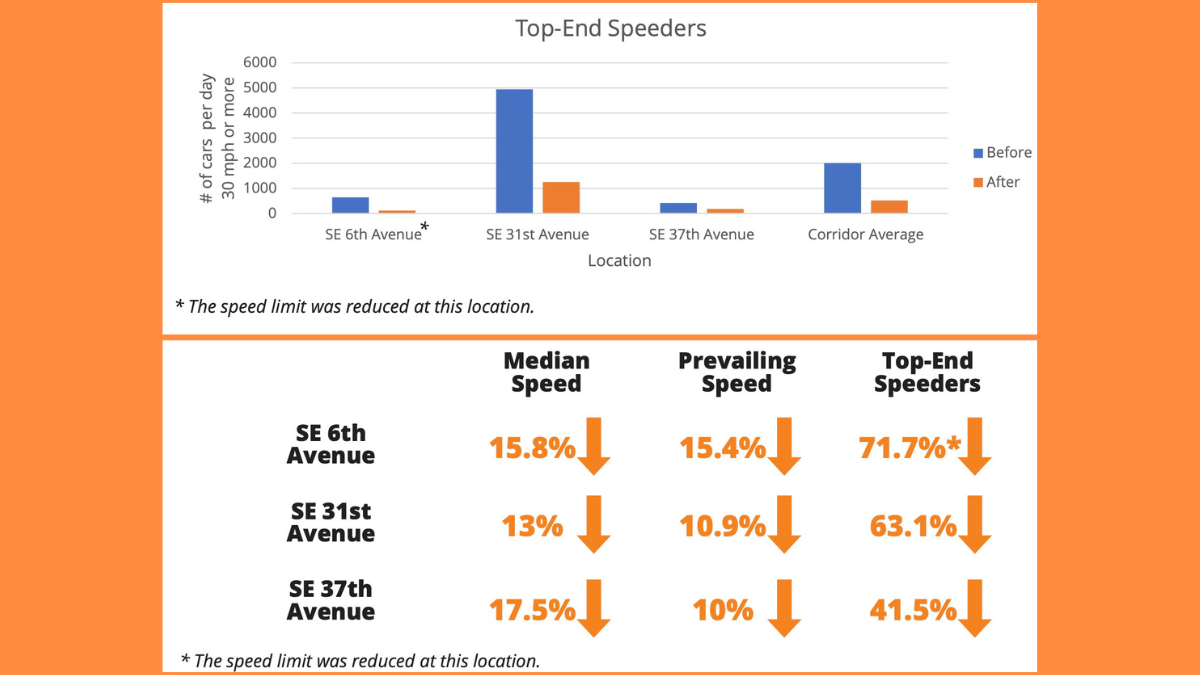
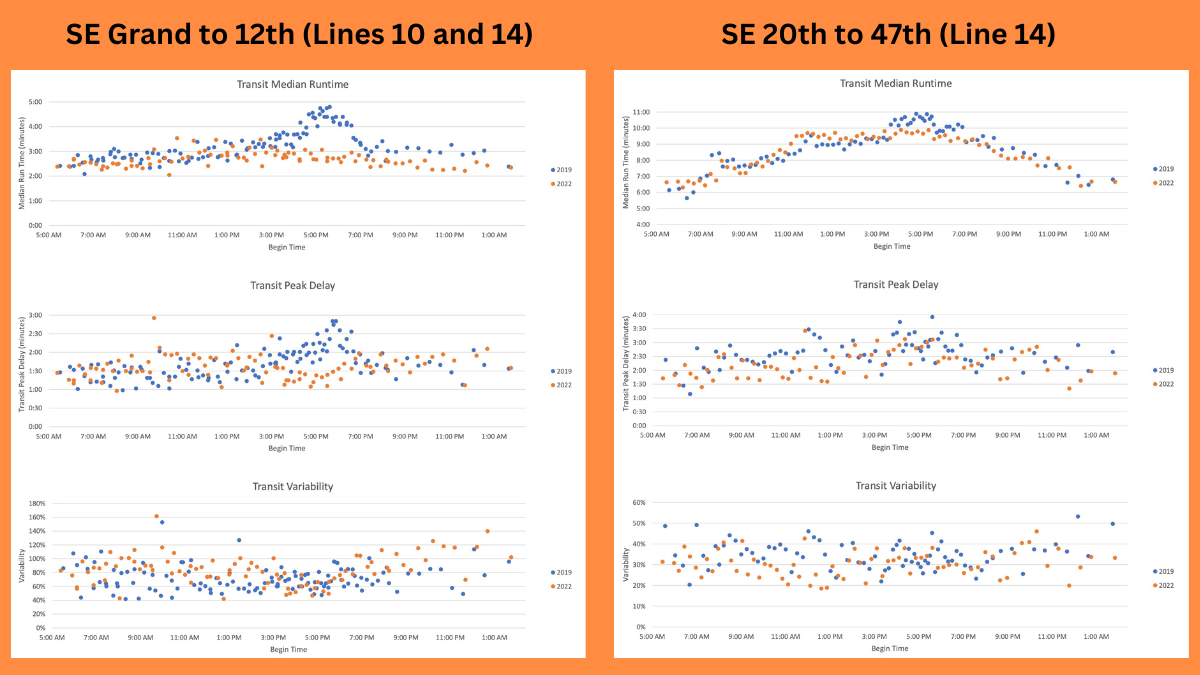
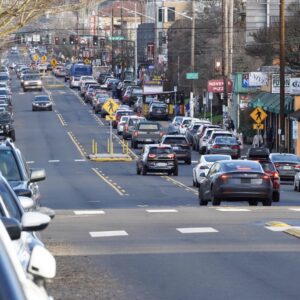
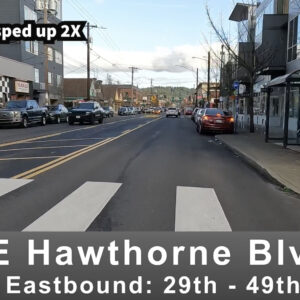
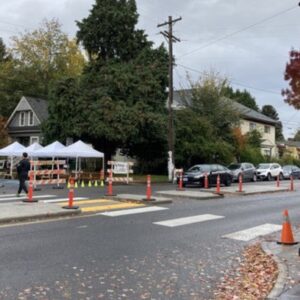
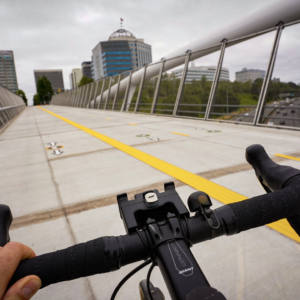
Thanks for reading.
BikePortland has served this community with independent community journalism since 2005. We rely on subscriptions from readers like you to survive. Your financial support is vital in keeping this valuable resource alive and well.
Please subscribe today to strengthen and expand our work.
“Accessibility, comfort, and safety has improved for everyone, especially pedestrians, people biking, and people taking transit.”
Because the report was shared between two separate projects and included the lower Madison/Hawthorne PBL, the report can claim an improvement for people biking. Otherwise I can’t find anything in the report that shows an effect on biking re the Pave and Paint project. Shorter crossings might be nice, but this project has cemented a version of Hawthorne that limits cycling for decades.
yes that’s an important point eawriste. However, given the lower speeds and crossing improvements, PBOT would likely say that there was an incremental improvement in cycling in the corridor generally. That being said, I should probably address this in the story. I’ll go back and add something. Thanks.
No, they aren’t ‘protected’. “Buffered” or “Delineated” maybe, but “Protected” absolutely not. It’s paint and plastic, that’s all. No concrete in sight. I really wish you’d stop calling bike lanes “protected” when there’s zero actual protection.
I don’t care that PBOT calls them “protected”. They are lying.
To be fair, there are parking protected sections for a few blocks. Where there is intersection daylighting, and the parking stops, it would be nice to see some curbs and real metal bollards to stop early turning cars and bike lane incursions.
As primarily a bike rider, the work done east of 12th is of no material benefit to me and my travel patterns around the Hawthorne area have not changed at all. That is to say, I almost never visit any destination on Hawthorne east of 12th, same as before.
The bike lanes between the viaduct and 12th are a mixed bag. Vehicle speeds are noticeably lower but the curbside bike lane is just a bit too narrow to make passing easy, and I have had scary close calls with crossing vehicles.
However I’ve started using the bus lane (if there’s no bus nearby) and it’s great! Wide, fast, much reduced cross traffic risk. Thanks PBOT!
I live a couple of blocks off Hawthorne and frequent the business at most once a year. I do take SE Salmon to the Krogers* occasionally but that’s not really the business district.
I almost always turn left off lower Hawthorne so I’ve started using the bus lane as well (always with a look back to make sure no bus is nearby). I can’t stand the Copenhagen lefts (even though I guess in the absence of bike signal phase it’s necessary for the interested but concerned).
*I shop in quantity at Winco and only use Krogers for a rare quick purchase. I hate Krogers/Safeway/Albertsons almost as much as I hate Amazon/WholeFoods.
The protected bike lane from 6th to 12th is an abject failure. This may have solved some right hooks, but introduced a slightly different right hook, and lots of blocked bike lanes by cars trying to cross.
Its very, very hard for a motorist driving East to see me in the bike lane and not hook me. And when I drive this section, I am extremely aware of the bike lane, and I still have a hard time seeing if or when bicyclists are present.
I think the design is fine, actually. Bikes get a separate signal. The real problem there is the lack of any concrete or other hard infrastructure to prevent drivers from going into the bike lane or cutting corners.
The biggest issue for me is the left turn from 12th on to Madison going West. I usually just do a right turn, u-turn, and then wait at the stop sign for a gap in car traffic.
There are four intersections that are not signalized. Those are the crossings I’ve had issues with.
They should close off the intersections on Hawthorne on the south side such as 6th, 8th, 9th, and 10th. They are already such low traffic streets and closing it would give a continuous conflict free lane all the way to 11th. As others have mentioned, it’s a painful conflict point with right turning cars and as I’ve mostly experienced it with cars pulling out into the bike lane to turn right onto Hawthorne.
It’s something I wish PBOT would consider doing more often to give protected bike lanes more continuous protection. Portland’s block size is 200ft which is smaller than most cities so having a break in protection every block results in an inadequacy. Consider the riding experience on SW Broadway through PSU versus the rest of downtown. Completely different levels of protection.
“This is less than half of the travel time increases PBOT expected based on pre-project modeling,” the bureau said in their report.
Sounds like they should have been twice as aggressive with their designs 😛
Can’t really congratulate themselves for travel-time increases being half what they modeled, when their modeling did not include a pandemic.
The pandemic largely took cars off the road and enabled more egregious speeding
Speaking as a pedestrian these improvements are a game changer (now please fix Belmont, PBOT). As someone who rides a bike for longer trips, the new crosswalks make it far more to cross Hawthorne so also a modest improvement. I wish there had been more focus on the failing neighborhood greenway (SE Salmon) and abandoned bike boulevard (SE 34th), instead of the never-going-to-happen and incredibly sub-par protected bike lane proposal.
They should repave Salmon and 34th, and place a modal filters at 34th and Salmon/Lincoln.
Agreed. Diverters at 20th and Chavez are also needed.
I ride Hawthorne less now and prefer SE Clay. The weird bus platforms, ill timed light patterns, and feeling unseen because the protected parking wall. Very wild to me.
I also don’t think PBOT would tell us that this over criticized project would be a failure. My mistrust for them has never been greater.
What did you expect from a PBOT report, that things would be worse? Of course the agency that implemented the project will give thumbs up for their own work – what you really need is an outside evaluation of the project, for example by the City of Gresham or the City of Seattle – otherwise it’s all fluff piece of hack journalism.
I’m not sure how much credence you can give to statistics like 10% reductions in delay, etc., when the ‘before’ data is pre-pandemic (2019).